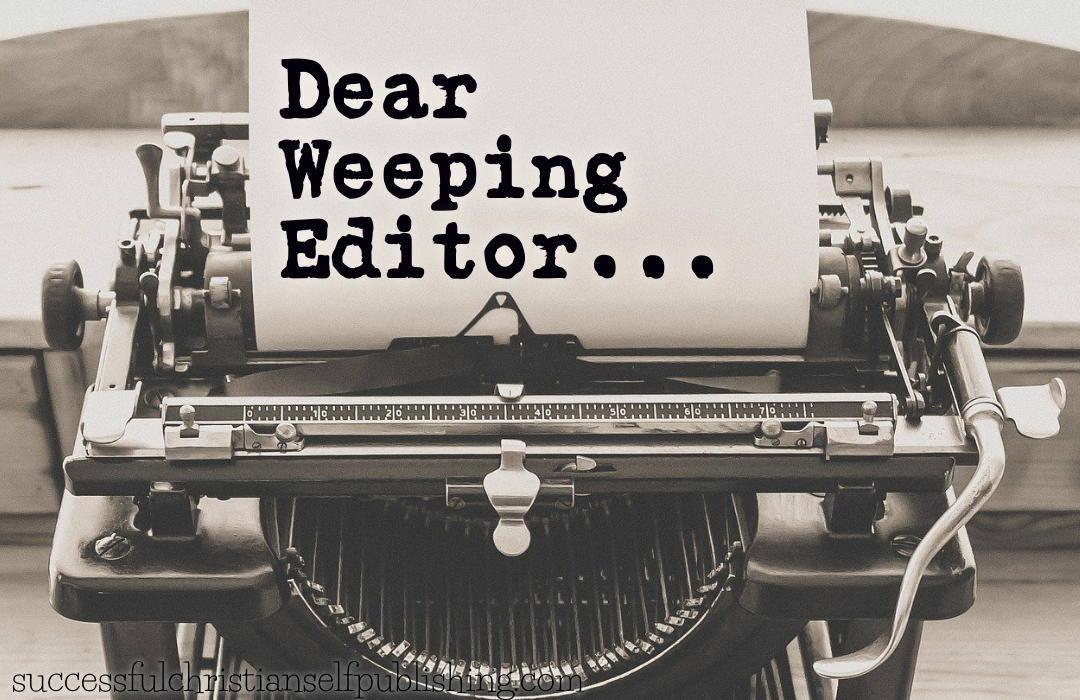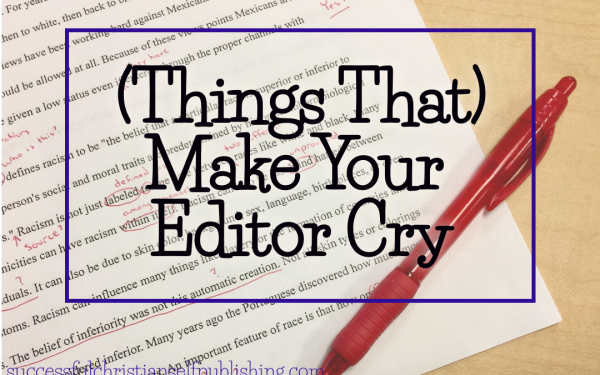Dear Weeping Editor: A… Question of Ellipsis

Dear Weeping Editor,
I am one of those writers that… makes you cry sometimes. Lately I’ve struggled with ellipsis… or ellipses… however it’s spelled. I mean… is it three dots separated with a space? Is it… four dots… or three dots with a space on either side and no spaces between the dots? When do I… what’s the proper way to use it… ?
Signed
Dotty
Dear Dotty,
I really appreciate this question. I will try not to leave anything out (see what I did there? Maybe not, but read on).
An ellipsis is a punctuation mark consisting of three dots and ONLY three dots, no more and no less. An ellipsis should always and ONLY EVER indicate an omission.
As for spelling, an ellipsis (singular) is one of more than one ellipses (plural). This is not to be confused with an ellipse which is the mathematical name for a particular kind of closed curve. An ellipsis can be represented by three periods without spaces like so, “…” or by the actual single ellipsis character like so, “…” (the html codes of which are “…” or “…” and also “…”) using most modern word processors or web page designers.
The term ellipsis comes from the Greek word meaning “omission,” and that’s just what an ellipsis does—it shows that something has been left out. Primarily, you use an ellipsis when omitting a word, phrase, line, paragraph, or more from a quoted passage. Ellipses save space or remove material that is less relevant. They are useful in getting right to the point without delay or distraction. Omit any punctuation on either side of the ellipsis, unless the punctuation is necessary to make the shortened quotation grammatically correct.
As far as spaces before and after, there are no two style guides that agree. Your publisher’s preferred style can agree with AP Style and Gregg and oppose CMOS and Harbrace or agree with CMOS and partially agree with Harbrace and Gregg and so on. One punctuation guide will confidently tell you there is always a space before an ellipsis, then list all the exceptions to that rule. Another will tell you never to put a space before an ellipsis then list all the reasons you will sometimes add a space.
Here is what I think is the most acceptable trick to getting the spaces right. Treat any single ellipsis as if it were a comma. Therefore, you will not put a space immediately before an ellipsis and you will put a space directly after the ellipsis most of the time, just like with a comma. You would only rarely put a space before a comma and you would almost always put a space after a comma. So, put an ellipsis immediately after the preceding word with no space and follow it with a space when followed by another word. If followed by other punctuation mark, or in the case that the ellipses is the final punctuation mark in the sentence, omit the trailing space. For example, you would not insert a space between a comma and a closing quotation mark, and you would also not insert a space between an ellipsis and a closing quotation mark.
If your publisher’s in-house style guide doesn’t agree with this rule of thumb, it won’t break any universal constants or fracture reality. Just ensure that you remain consistent. Here are some correct usage examples.
Full quotation:
The Senator said, “Today, though we have passed this kind of legislation in recent days, we vetoed the bill.”
With ellipsis:
The Senator said, “Today… we vetoed the bill.”
Never, as in never ever, use an ellipsis to change the meaning of any quoted text even slightly. Incorrect usage examples:
Full quotation:
The Senator said, “Today, though we have passed this kind of legislation in recent days, we vetoed the bill.”
With ellipsis:
The Senator said, “Today… we have passed… the bill.”
The CMOS states, “Ellipsis points suggest faltering or fragmented speech accompanied by confusion, insecurity, distress, or uncertainty.” The CMOS contrasts ellipses with em dashes, which it states should be reserved for (and this is a direct quote) “more confident and decisive pauses.”
On this point, many editors (including me) disagree with the CMOS, especially as it applies to contemporary works of fiction. In fiction writing, unless it is crystal clear to the reader exactly what text has been omitted, then I think using the ellipsis is bad form. It is like leaving an intentional loose end that the reader will never be able to tie up.
Our in-house style rule is that ellipses should never be used to express hesitation, changes of mood, suspense, or thoughts trailing off (technical term: aposiopesis). Reserve ellipses exclusively for omission of some text. We feel that hesitation, changes of mood, suspense, or aposiopesis represent (quote) “more confident and decisive pauses,” and thus an em dash is exactly the more appropriate punctuation mark.
In a lot of fiction I edit, the most common misuse of the ellipsis is to indicate a trailing off and to build tension. This device is overused and very often ineffective where proper punctuation and/or more precise and fully developed narrative would be more effective in my opinion.
Jill sobbed and answered, “I just don’t know how… to say this… It’s just that… I’m in love… with someone else…”
“I don’t know how to say this,” Jill answered with a sob. “It’s just that—I’m in love.” She shook her head and whispered, “With someone else.”
You can see for yourself that the first example reads as terribly weak in comparison to the second example. In the first place, nothing in the top example is actually being omitted. Secondly, the narrative action beats infuse the second example with characterization and amplify the intended mood.
Use of ellipses to indicate a pause or wavering in an otherwise straightforward sentence, or use just for the sake of use, is also stylistically bad.
I don’t know… I’m not sure.
How do I use an ellipsis… correctly?
He said, “I… really don’t… understand this.”
Instead, use an em dash or narrative (which better adds characterization). Confine ellipses to omissions. Examples:
I don’t know—I’m not sure.
How do I use an ellipsis correctly?
He said, “I—really don’t—understand this.”
“I,” he began and hesitated, “really don’t,” he shook his head, “understand this.”
Of course, when words are actually omitted, ellipses are perfectly appropriate and even correct. One place they should always be used is in the case of a sudden interruption. If an ellipsis is immediately followed by any other punctuation, the trailing space can be omitted. Use appropriate punctuation after an ellipsis when called for. Examples:
The Senator said, “I don’t know…” He never finished the sentence.
The Senator shouted, “I don’t know…!” He never finished the sentence.
In the second example, note that there is no trailing space between the ellipsis and the exclamation mark. You would likewise use this in the case of an unfinished interrogative. Example:
The Senator shouted, “Don’t you know…?” He never finished the question.
I hope this brief article has answered more questions than it raised. I really appreciate the question and the opportunity to offer advice on this topic.

Gregg Bridgeman is the Editor-in-Chief at Olivia Kimbrell Press. He is husband to best-selling Christian author Hallee Bridgeman and parent to three. He continues to proudly serve in the US Armed Forces and has done so in either an active or reserve capacity for more than twenty years as an airborne and air assault qualified paratrooper, earning a Bronze Star for his service. Most importantly, he was ordained in October of 2001 after surrendering his life to Christ decades earlier.


Guilty.
I use ellipses to show trailing off, confusion, hesitation.
What you say makes sense, though, and I shall reform.
How to create an em dash, please?